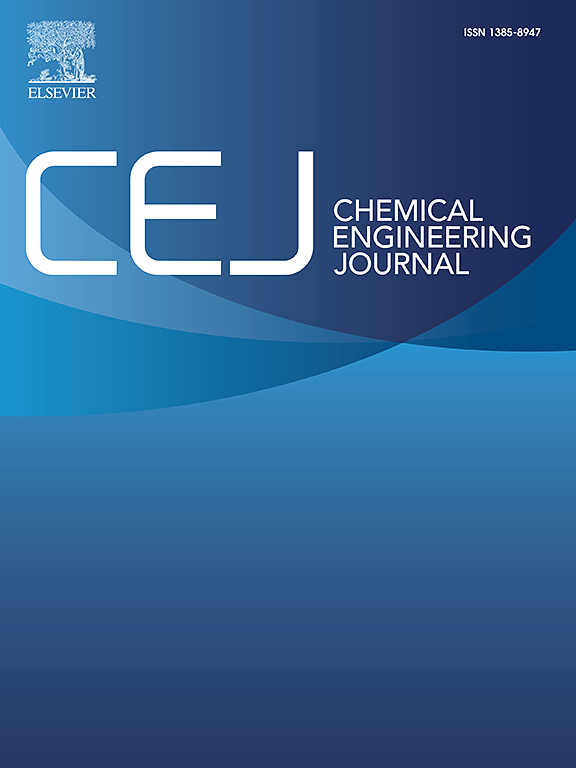Deep deoxidation of water in a miniaturized annular rotating device: Experimental investigation and machine learning modeling
IF 13.3
1区 工程技术
Q1 ENGINEERING, CHEMICAL
引用次数: 0
Abstract
Conventional gas–liquid devices exhibit limitations, including inadequate dispersion efficiency and significant backmixing, leading to low conversion and large equipment volume. Thus, a miniaturized annular rotating device (m-ARD) was proposed based on microscale effects and rotating flow field to achieve efficient gas–liquid mass transfer and high conversion. Nitrogen-oxygenated water was selected as the experimental system to evaluate the performance of the m-ARD. The gas–liquid flow characteristics were investigated. The analysis focused on examining the impact of different factors on deoxygenation efficiency. The deoxygenation performance was optimized and compared with different devices. The study found that the m-ARD enables a continuous counter-current gas–liquid flow mode, with superior mixing performance and a narrow residence time distribution. The deoxygenated water with an oxygen concentration as low as 0.14 ppm can be produced, with a volumetric mass transfer coefficient (kLa) of 0.26 s−1, a theoretical stage value of 4.22, and a handling capacity of 30 mL/min under optimized experimental conditions. In addition, kLa was predicted using an artificial neural network model and showed good agreement with the simulated values. This work provides a promising reactor for chemical reactions that require high conversions.微型环形旋转装置中的水深度脱氧:实验研究与机器学习建模
传统的气液分离装置存在一些局限性,包括分散效率不高和反向混合现象严重,导致转化率低和设备体积大。因此,我们提出了一种基于微尺度效应和旋转流场的微型环形旋转装置(m-ARD),以实现高效的气液传质和高转化率。氮氧水被选作实验系统,以评估 m-ARD 的性能。对气液流动特性进行了研究。分析的重点是研究不同因素对脱氧效率的影响。对脱氧性能进行了优化,并与不同装置进行了比较。研究发现,m-ARD 可实现连续逆流气液流动模式,具有出色的混合性能和较窄的停留时间分布。在优化的实验条件下,可生产出氧浓度低至 0.14 ppm 的脱氧水,体积传质系数(kLa)为 0.26 s-1,理论阶段值为 4.22,处理能力为 30 mL/min。此外,还利用人工神经网络模型对 kLa 进行了预测,结果与模拟值吻合。这项工作为需要高转化率的化学反应提供了一种前景广阔的反应器。
本文章由计算机程序翻译,如有差异,请以英文原文为准。
求助全文
约1分钟内获得全文
求助全文
来源期刊

Chemical Engineering Journal
工程技术-工程:化工
CiteScore
21.70
自引率
9.30%
发文量
6781
审稿时长
2.4 months
期刊介绍:
The Chemical Engineering Journal is an international research journal that invites contributions of original and novel fundamental research. It aims to provide an international platform for presenting original fundamental research, interpretative reviews, and discussions on new developments in chemical engineering. The journal welcomes papers that describe novel theory and its practical application, as well as those that demonstrate the transfer of techniques from other disciplines. It also welcomes reports on carefully conducted experimental work that is soundly interpreted. The main focus of the journal is on original and rigorous research results that have broad significance. The Catalysis section within the Chemical Engineering Journal focuses specifically on Experimental and Theoretical studies in the fields of heterogeneous catalysis, molecular catalysis, and biocatalysis. These studies have industrial impact on various sectors such as chemicals, energy, materials, foods, healthcare, and environmental protection.
 求助内容:
求助内容: 应助结果提醒方式:
应助结果提醒方式:


